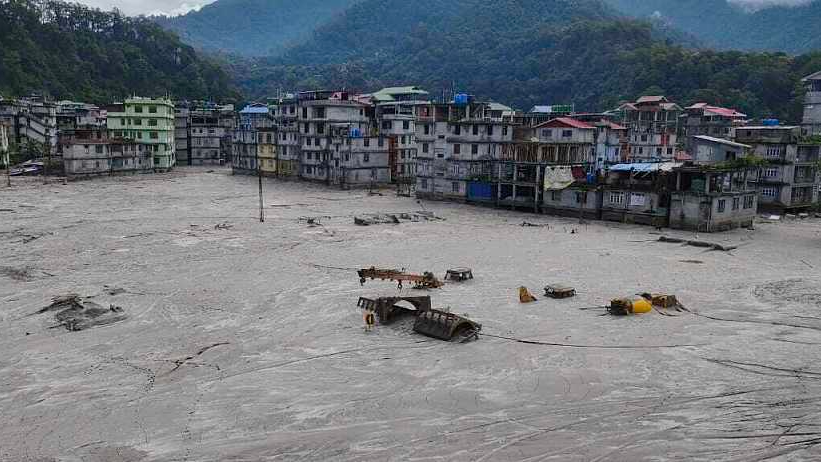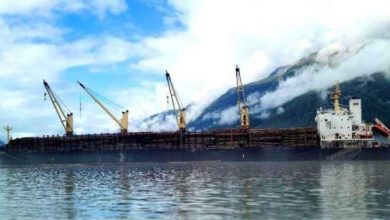Death toll rises to 56 after Indian glacial lake bursts bank in heavy rain

[ad_1]
The death toll rose to 56 in northeast India after heavy rain caused a Himalayan lake to burst its banks, triggering flash floods down a mountain valley, local media reported on Saturday.
Violent torrents struck mountainous Sikkim state on Wednesday after the sudden bursting of Lhonak Lake. Climate scientists warn that similar disasters will become an increasing danger across the Himalayas as global temperatures rise and ice melts.
“So far 26 bodies have been found in Sikkim,” state relief commissioner Anilraj Rai said.
Thirty more bodies had been recovered from the Teesta river basin by search and rescue teams downstream in neighboring West Bengal state, Jalpaiguri district police superintendent K. Umesh Ganpat said.
“The river stretches up to 86 kilometers,” he added. “The search operation is continuing.”
Among the dead are seven Indian army soldiers posted in Sikkim, and sixteen soldiers are among the more than 100 people still missing.
India’s Defense Ministry said in a statement that the floods had washed away “firearms and explosives” from military camps. The army has “established lookout teams all along the river” to recover loose ordnance, the ministry added.
Local media reports on Friday said that two people had been killed and four others injured by a mortar shell that exploded while flowing through the flood waters in West Bengal.
Roads, bridges and telephone lines have been destroyed across much of the state, complicating evacuations and efforts to communicate with thousands cut off from the rest of the country.
More than 1,200 houses had been damaged by the floods, according to the latest Sikkim government bulletin.
More than 2,400 people had been rescued, while nearly 7,000 others were taking shelter at makeshift relief camps set up at schools, government offices and guesthouses, the bulletin said.

Buildings are inundated after flash floods triggered by sudden heavy rainfall swamped Rangpo town in Sikkim, India, October 6. 2023. /CFP
Buildings are inundated after flash floods triggered by sudden heavy rainfall swamped Rangpo town in Sikkim, India, October 6. 2023. /CFP
The water surge came after intense rainfall burst the high-altitude Lhonak Lake. Water powered downstream, adding to a river already swollen by monsoon rains, damaging a dam and sweeping away houses.
Himalayan glaciers are melting faster than ever due to climate change, exposing communities to unpredictable and costly disasters, according to the International Center for Integrated Mountain Development (ICIMOD) research group.
The glaciers disappeared 65 percent faster since 2010 than in the previous decade and could lose up to 75 percent of their volume by the century’s end, according to a 2023 report from the ICIMOD.
“The root cause is climate change and this (is) going to increase in the future,” ICIMOD climate change specialist Arun Bhakta Shrestha said.
“Similar glacial lake outbursts, flood events are very likely.”
Earth’s average surface temperature has risen nearly 1.2 degrees Celsius since pre-industrial times, but high-mountain regions around the world have warmed at twice that pace, climate scientists say.
(With input from AFP)
[ad_2]
Source link





